Dear creative friends,
Welcome to Issue No. 77 of the Studioworks Journal! I’m so happy you’re here.
This month, we’re stepping into something a little more magical—an invitation to wander through wildflowers, into the woods, and maybe even beyond the veil. May sits in that liminal space between spring and summer, where the air feels softer and the world a little more alive. It’s the perfect time to reconnect with nature, imagination, and the quiet joy of enchantment.
Let this be a month for wonder—for fairies, flowers, and the unseen sparks that stir your creativity. I hope this issue brings a little bit of magic into your hands.
xo,

With spring in full splendor and every living organism going gangbusters, it’s natural to feel that the veil between worlds of magic and the mundane is a gossamer thing. With very little creative effort, one can see the face of a fairy peering from between the petals of a flower or perhaps an imp using a handy thistle or nettle to pierce or sting your still-tender feet as you walk by. Miraculous or Magical May seems a fitting title for this luminescent liminal time of the year.
Throughout history and across our glorious green-blue globe, people have conjured the notion of supernatural creatures as something more than a person but less than a god. These mystical beings have unsurprisingly served as muses for many artists. In addition, they have often found themselves in bucolic settings best encountered amongst spring blossoms. Come wander with me through the world of fairy lore and folklore, as we explore the many wondrous shapes the human imagination can take.

As with most enduring mythology, there isn’t a clear origin story for fairy folk. Every culture seems to have some version of this creature in its annals. One sure thing is that the earliest depictions of fairies were often more menacing and less whimsical, more earthy and less winged. However, for our purposes, we will jump to the pivot point or portal, if you will, where fairies transitioned into the more ubiquitous variety we’re familiar with today.
William Shakespeare’s 16th-century play, A Midsummer Night’s Dream, takes us solidly away from the fearsome hobgoblins of the Tudor period but never expressly mentions wings. The fairies of the Stuart era were generally depicted as being closer to human size, mischievous, and highly interactive with people. Despite the author’s lack of including an apparatus for flight, artists have freely included wings in their many depictions of the play, from the dreamy moonlit scene of John Simmons’ Hermia and Lysander to the vibrantly and richly textured illustrations of Victor G. Ambrus.
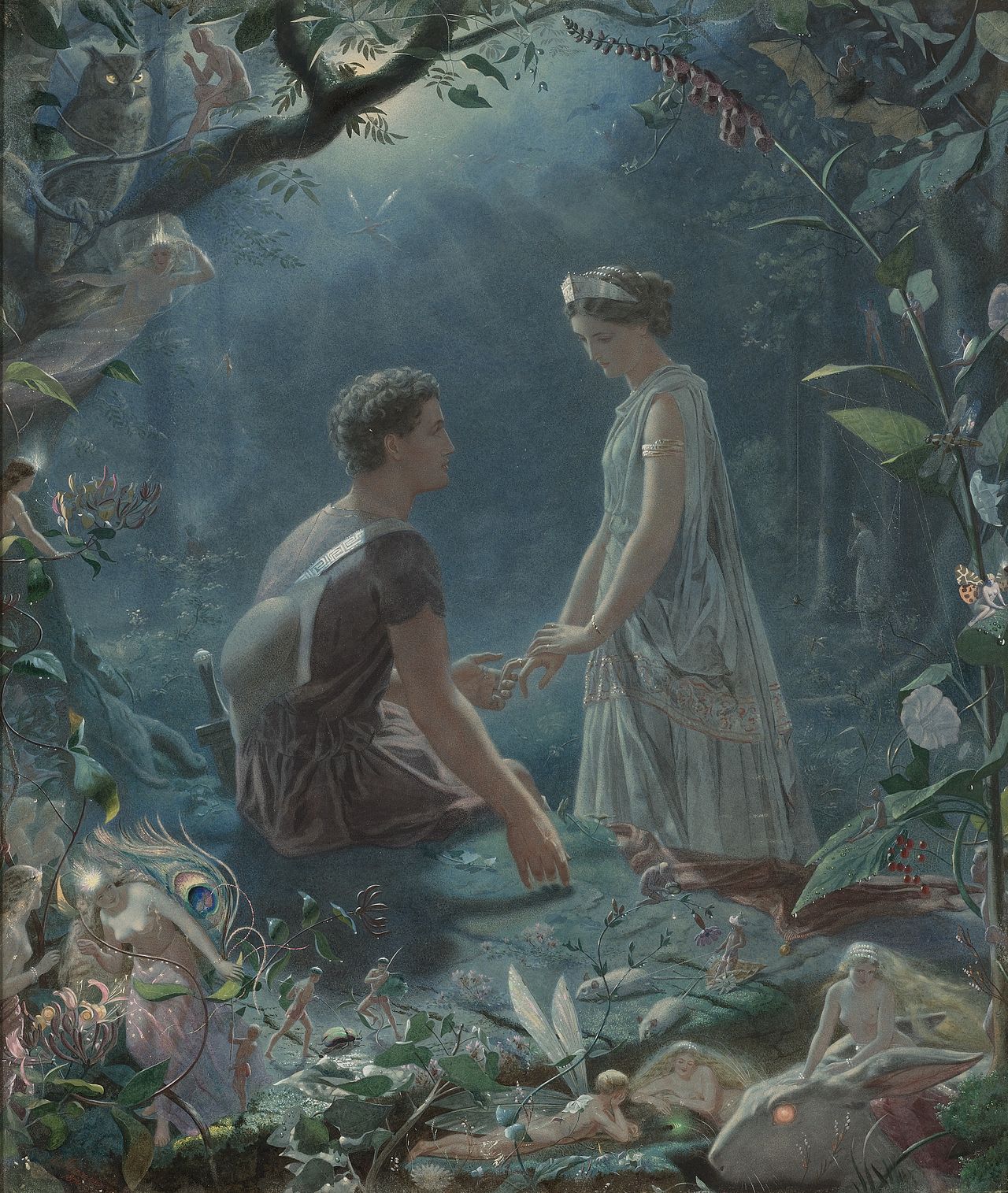
Hermia and Lysander
by John Simmons
Incidentally, A Midsummer Night’s Dream and The Tempest also served as a monumental source of inspiration for the Pre-Raphaelite painters of the Victorian Brotherhood. This period produced some of the most renowned painters of fairies of all time: Arthur Rackham, Richard Dadd, Charles and Richard Doyle, John Anster Fitzgerald, and Joseph Noel Paton. Their works were characterized by intricate detail, jewel-tone colors, vibrant nature scenes, and a flair for the unconventional. Some scholars suggest that their choice of nonhuman subjects was a way of biting their thumbs at censorship and freely painting nude figures.
Other sources of brilliant and enduring fairy art pieces are those created by illustrators of fairy tales, myths, and folklore. From Arthur Rackham's illustrations of Grimm’s Fairy Tales to Kinuko Y. Craft’s Cupid and Psyche, and more modern pieces such as Barbara McClintock's Illustration for The Heartaches of a French Cat, the diversity in these works is truly intriguing. They carry the thread of destructiveness that early fairies and mythical characters were often feared for, but are also becoming more glamorous and alluring.
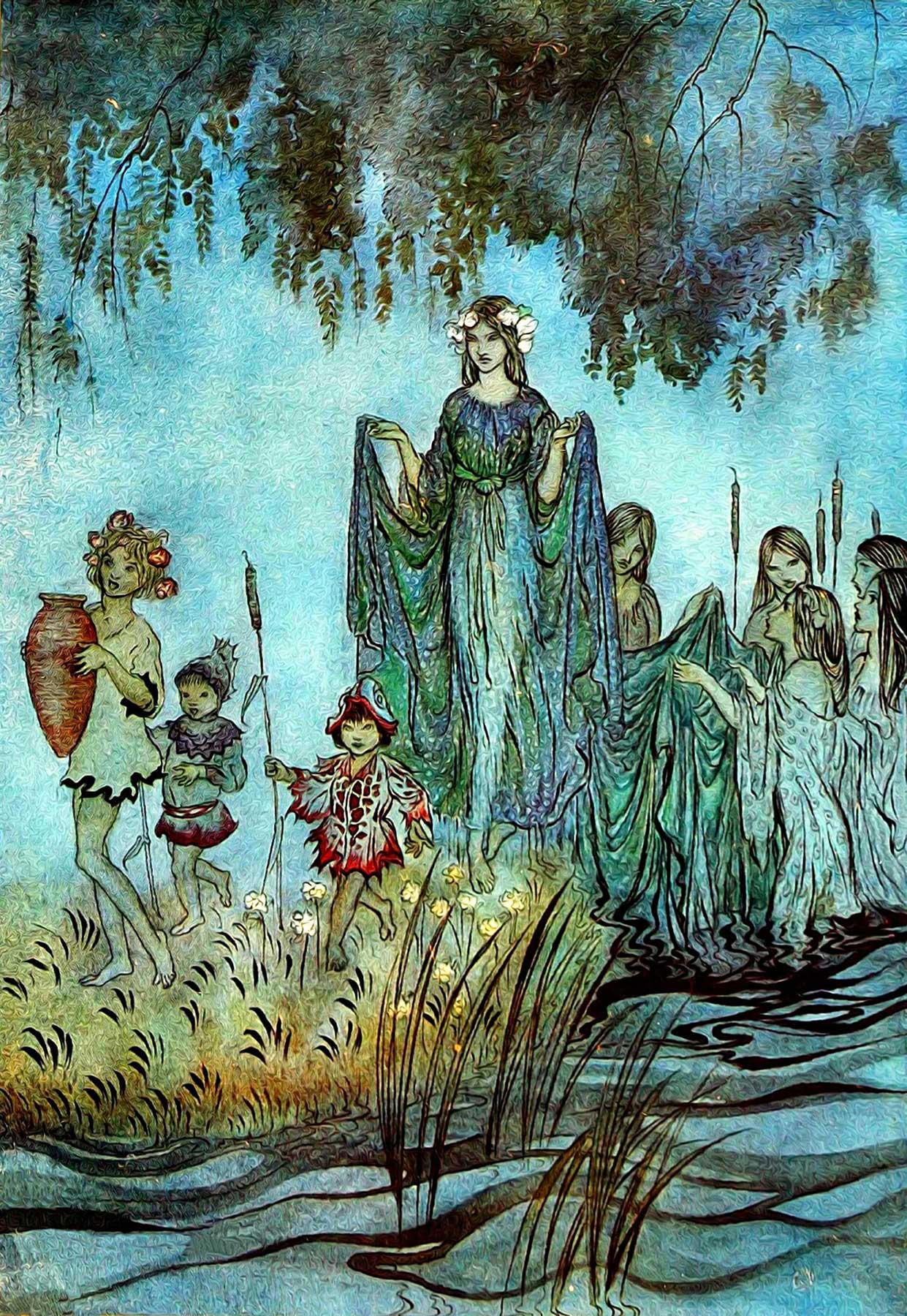
Arthur Rackham
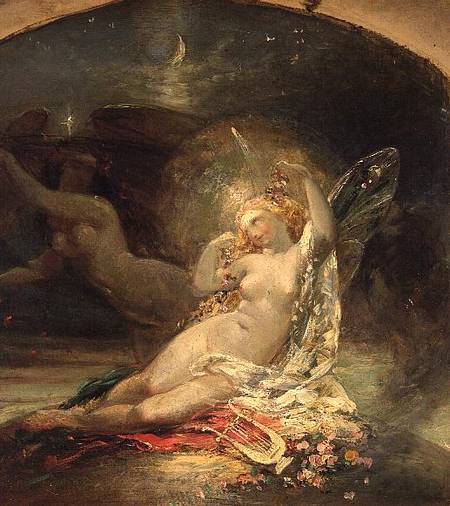
The Fairy Queen
By Sir Joseph Noel Paton
When J. M. Barrie wrote the play Peter Pan and Wendy in 1904, the transition to flying beauties was in full swing. His subsequent book's many illustrations and illustrators solidified the winged fairy's image in the popular imagination. Still, it was the release of Walt Disney’s 1953 cartoon version of Peter Pan that made Tinkerbell the quintessential fairy mascot. The modern television series Carnival Row continues with the theme of the gorgeous flying fairy but laces the storyline with dark undertones, evoking the older, more nuanced vision of fairies as beings as fierce as they are alluring.
Like a fairy door that takes us between worlds or a ring where mythic creatures dance and we dare not tread, our meanderings through art history reveal our enduring fascination with fairies and the supernatural. Cultural shifts tend to dictate the lens through which artists view the domain of magic, but there is a continuous thread of awe, beauty, and fascination with nature and her many mysteries that connects and inspires us all.
We need not live in an enchanted forest to encounter the miraculous in the world around us. A stroll through a community garden or down a tree-lined street with flowers in bloom is sufficient to usher us into a place of wonder and set us forth on a personal path to creative discovery.
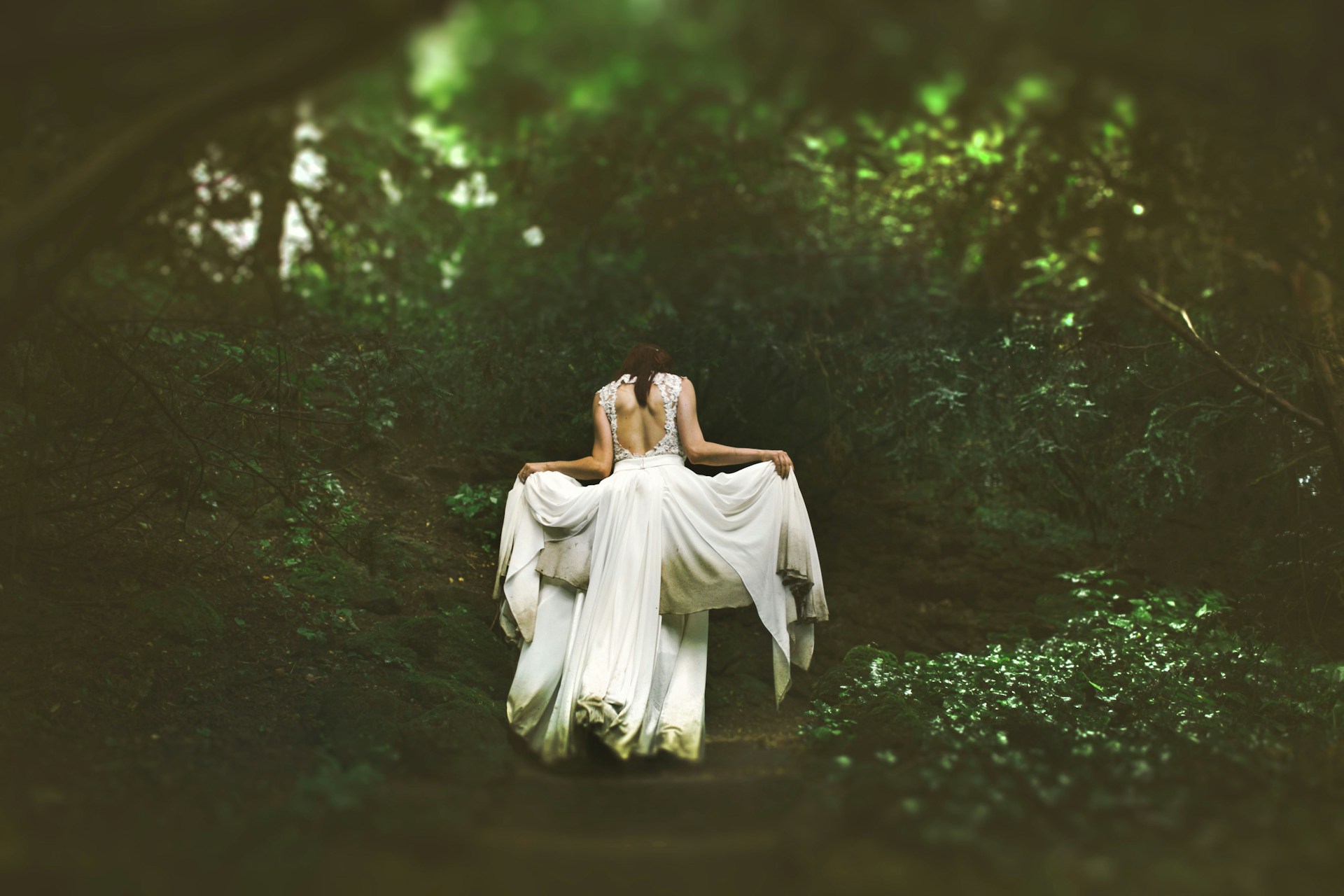
Magical May urges us to garner inspiration from nature’s abundant beauty; its link to our common fascination with the preternatural is perfectly poised to wet our collective creative whistles. For what better way to quench an artist’s thirst for making something glorious to behold than a world aglow with new life? Innovation abounds in such fertile grounds!
Join me in exploring how liminal times can bridge worlds and spark boundless creativity. Together, we’ll uncover how to channel that vibrant, in-between energy into meaningful artistic expression.
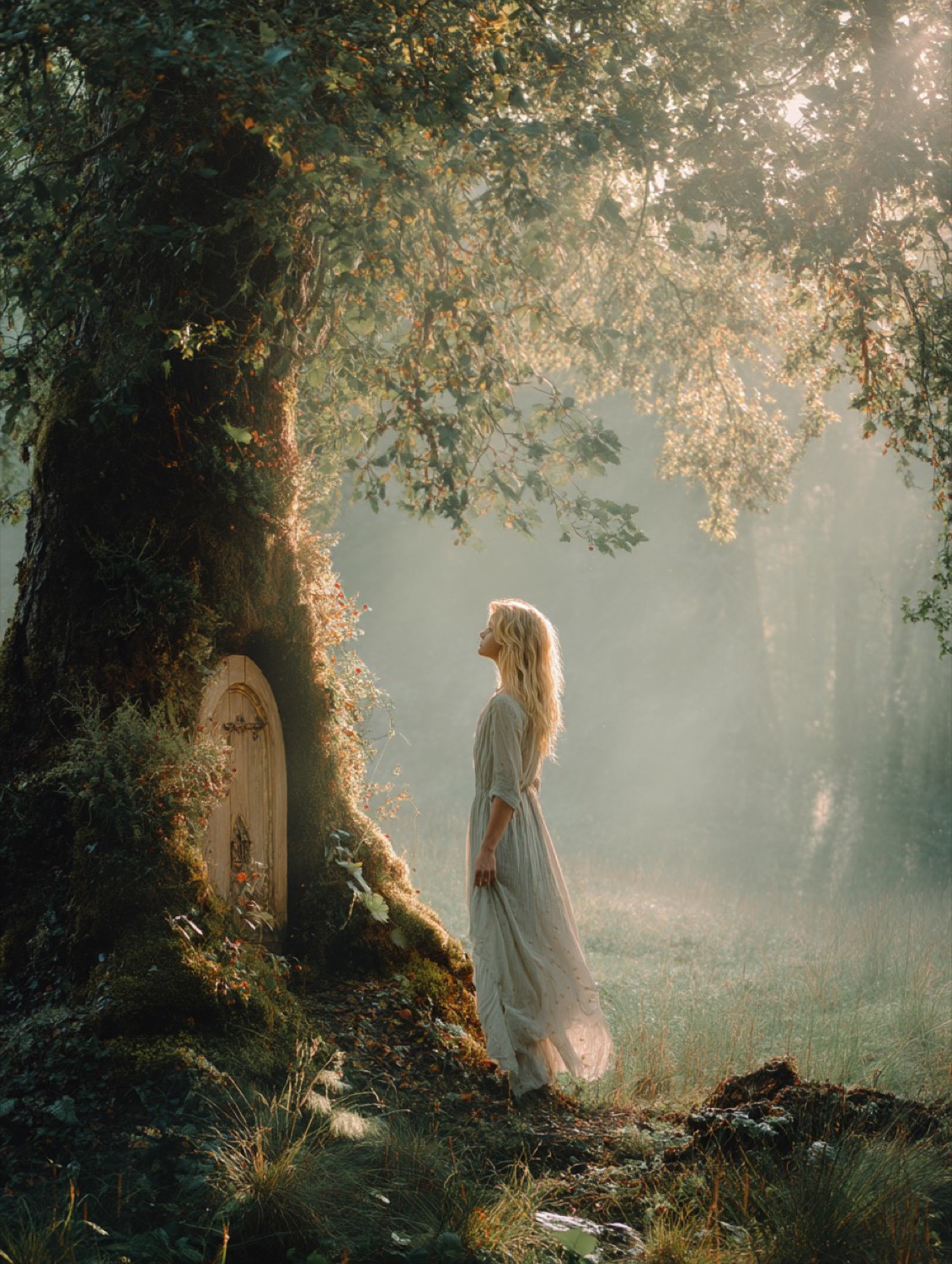
What does it mean to be liminal? How can we maximize the potential of this space? What are the benefits? What are the dangers? By addressing these questions and others that arise for us personally, we will unlock doors in our creative process that will serve as portals to our own magical artistic realms.
Let’s take a look at the first question. To be liminal is to inhabit a space that is neither here nor there. In fairy lore, there are hidden doorways that only appear to a human if the conditions are right and the person embodies the proper qualities. These doorways are that in between, the passageway from our world to the magical world of the fairies.
W. B. Yeats captures the yearning, nostalgia, danger, loss of innocence, and the staggering beauty of the fairy realm, as well as the liminal in general, in his haunting poem "The Stolen Child." In it, he carries us, through rich imagery and a sing-song rhythm, to a domain that, though alluring, forces the child from all that is familiar. This is the invitation and the risk of portal spaces.
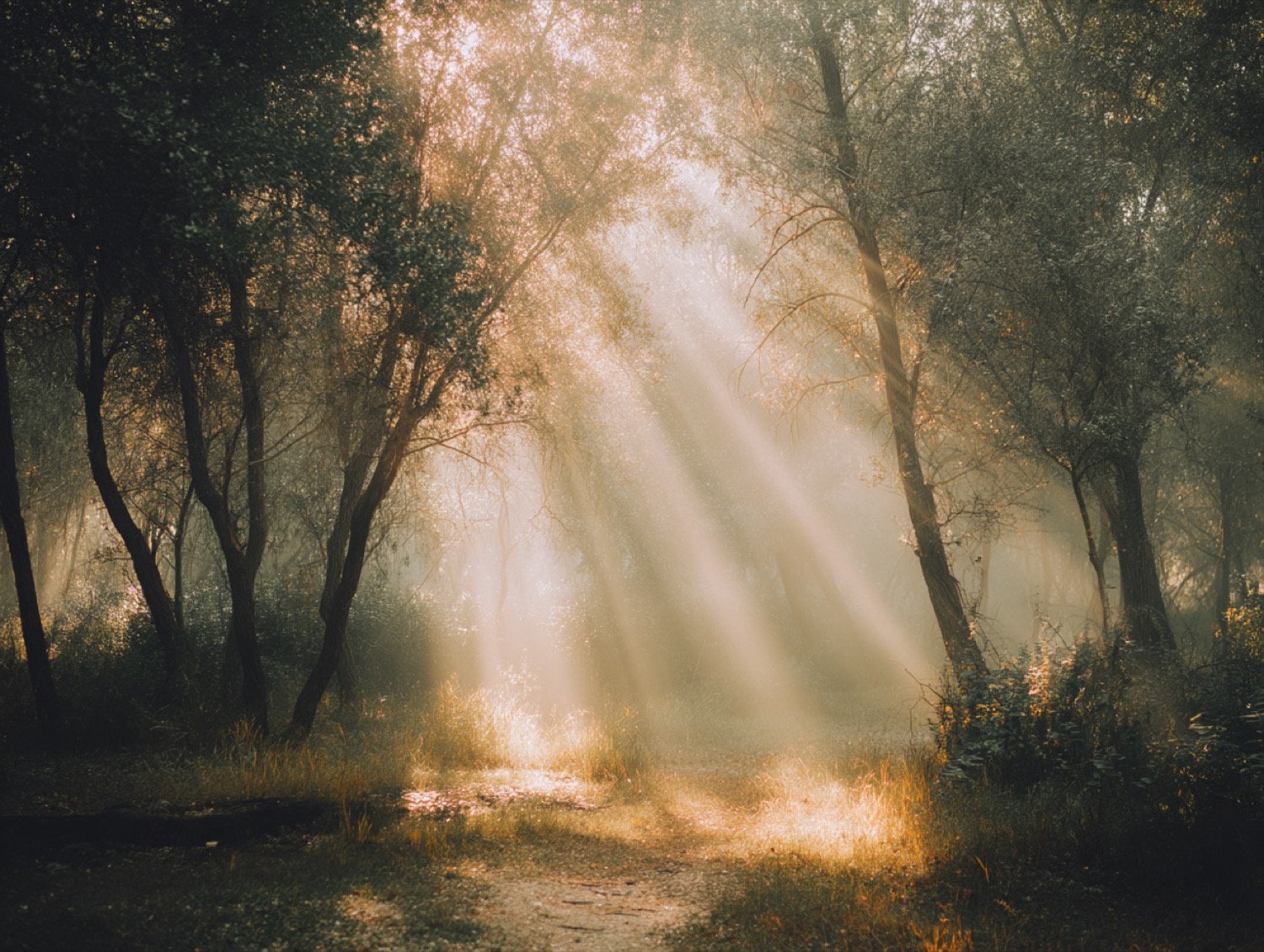
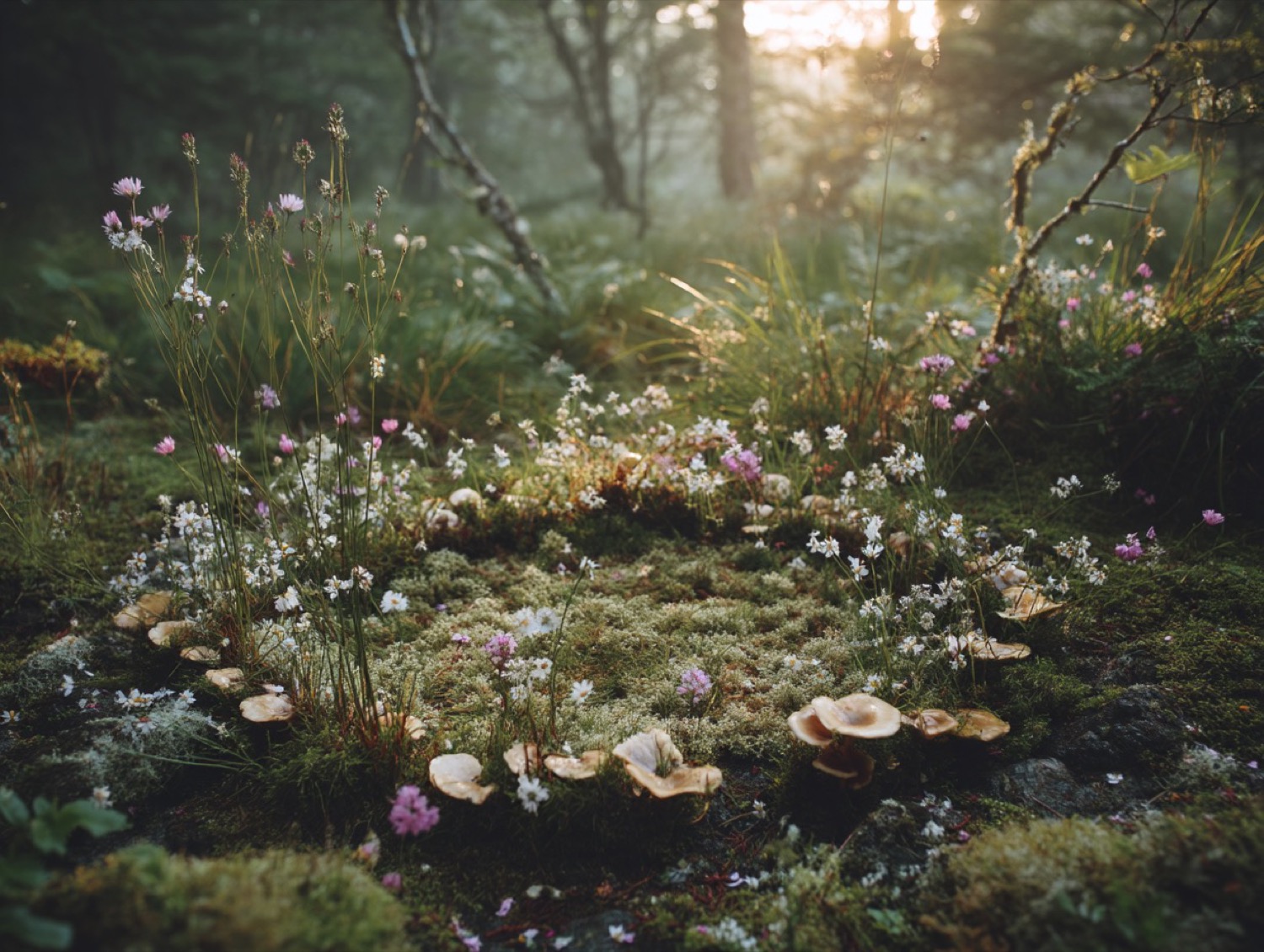
Let’s begin with a thought experiment. Find a completely relaxed position that suits your body’s needs. Once you are situated in a way that doesn’t require concentration or energy to sustain, close your eyes and begin to breathe slowly, focusing on the area around your heart. Some people find that visualizing the color green (representing the heart chakra) helps them deepen their relaxation.
As your sense of peacefulness extends through your body, concentrate energy on sending loving acceptance to the creator in you. Hold that place that brings imagination into the physical domain lightly like a newly hatched bird. When you’re ready, ask that vulnerable, gorgeous maker of art that resides in you what it most craves to bring to life. Take your time, and don’t force this.
When you’re ready, open your eyes and jot down the first words that come to mind. Perhaps sketch a few images that feel burned into your retinas from the exercise. If you take adequate time and foster a nurturing space, you will find the answer to what your work is in service to.
As artists, examining this space frees us to take risks in our process, leaving behind what we think we know about our art and venturing into new territory. Take a moment to read the Yeats poem. What does it make you feel? Are your fingers itching to sketch or paint some of the lush images he conveys?
Now, let’s examine the second question. We can garner the maximum from the liminal space by tapping into the energy of this most miraculous of months. According to the Mayan or Mesoamerican Calendar, there are days of maximum energy. They are scattered across the year, but there is a heavy concentration of them in May. What this means is that if we are tuned in and open to the idea of magic, we can gather energy to ourselves in a deliberate and powerful way, just as the ancients and those who still practice the old ways do.
Take a moment to breathe deeply. Meditate on what in the universe you want to draw upon and what you want to leave aside for the moment. Be clear in your intention. When you are ready, follow your whimsy to the nearest medium and location and let whatever arises leaven on its own terms.
It’s time to examine the final two questions. By now, the benefits of transitional spaces should be crystal clear. They are richly evocative and artistically compelling.
However, we’ve only intimated the dangers. Depending on the region, findings such as fairy rings (circles of mushrooms, flowers, or even trees) are not always considered auspicious; they can even be deemed threatening.
We are not meant to linger indefinitely between worlds. We cannot always be at the moment of birth, death, marriage, first encounter, etc. We must step into the domain we most want to inhabit and beware of what we leave behind. Lest we be like the genius thrust into madness embodied by that epic painter of fairies, Richard Dadd, we’d do well to choose which door to walk through wisely.
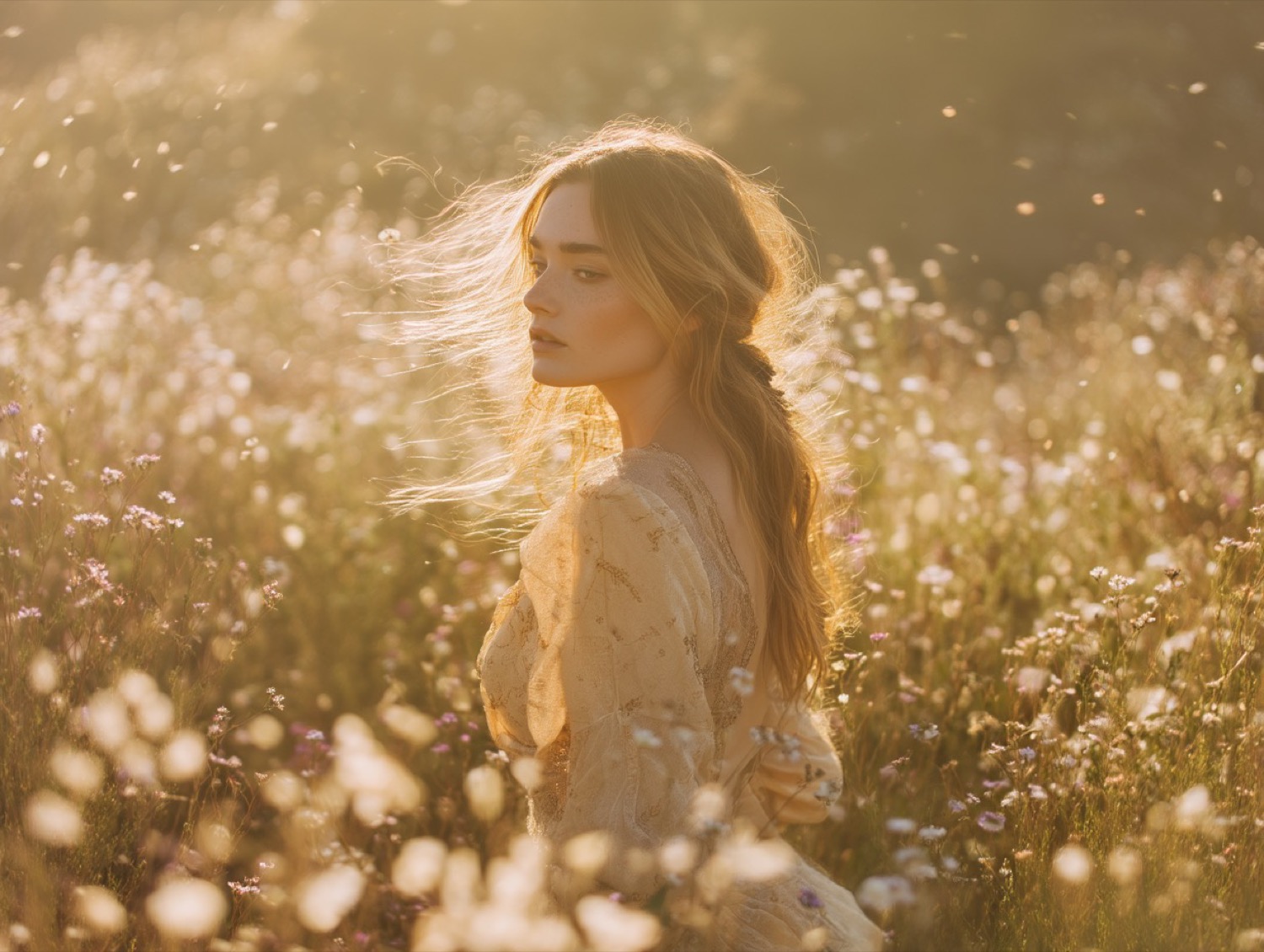
Life is beautiful, and the merry month of May reminds us of this. However, it is also a liminal time, a moment when the freshness of spring begins to ponder what the longer, warmer days of summer will entail. To make the most of this finite fecundity is the sacred duty of artists.
With this in mind, let’s fling our arms open wide and dance wantonly in a flower-strewn meadow. Let’s find or create fairy doors in unexpected places. Let’s cultivate the magic that currently abounds so that when the portal closes, we are propelled through the days to come on an energy that feels otherworldly.
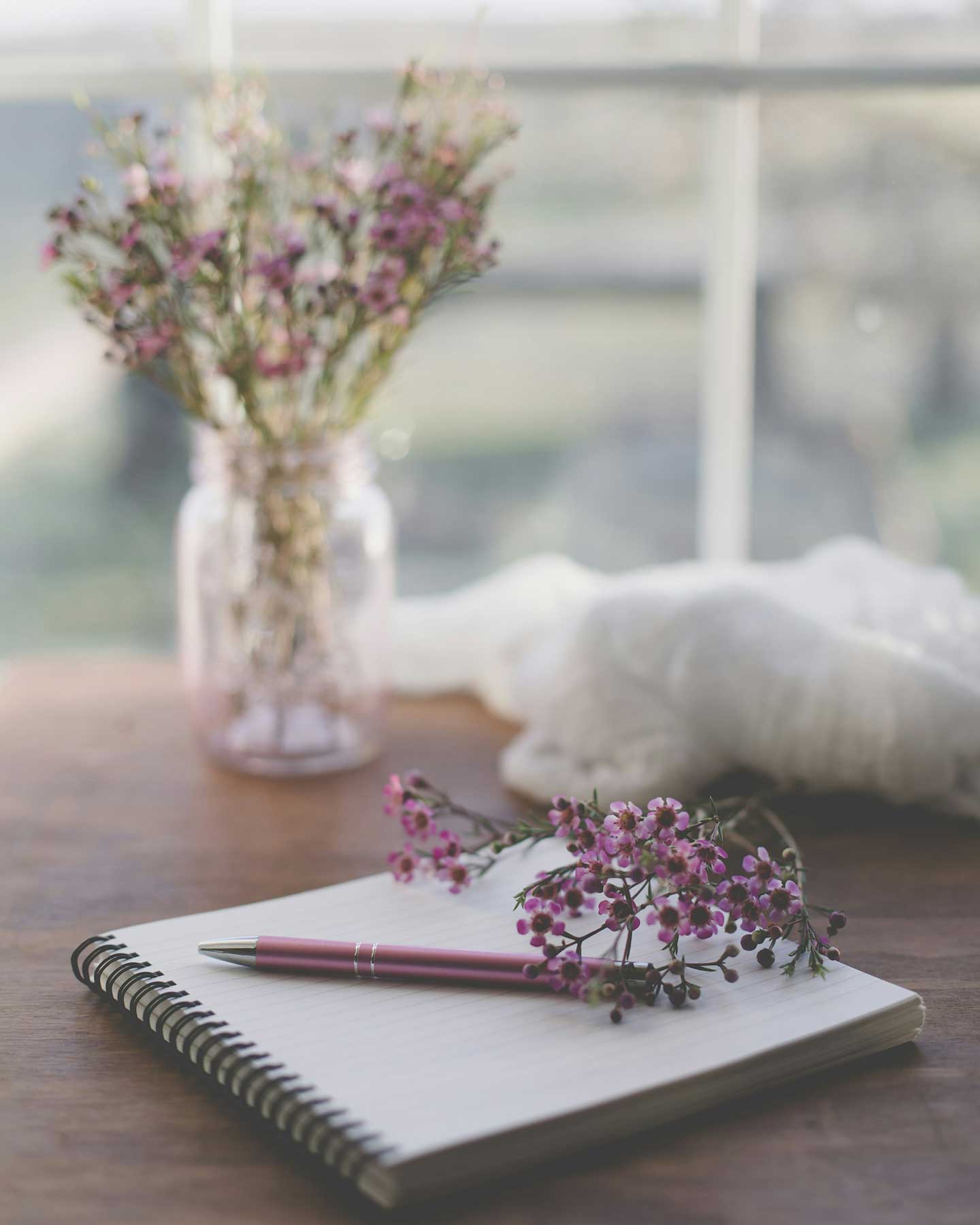
According to the Oxford English Dictionary, the word liminal is defined as:
1. Relating to a transitional or initial stage of a process.
2. Occupying a position at, or on both sides of, a boundary or threshold.
May is such a liminal month. Not quite spring, not fully summer—just that quiet, in-between place where everything feels like it’s shifting. The days stretch a little longer, the light softens, and the natural world seems to be holding its breath, just before it bursts into full bloom.
And honestly, I think our creativity lives in that same kind of space.
This month’s theme is all about wonder and enchantment—about fairies, flowers, and unseen things that stir the imagination. But underneath all of that is something deeper: the idea that creativity often begins at the edges of things. The edge of what we know and what we’re just beginning to feel. The space between idea and action. Between winter’s stillness and summer’s bloom.
Liminal as a Creative Threshold
(Let’s spend a moment with this word—it’s worth it.)
The word liminal comes from the Latin limen, meaning “threshold.” It’s the same root as subliminal and preliminary. But in creative work, liminal isn’t just a stage—it’s a mood. A doorway. A pause.
When we’re in a liminal space, we’re between two worlds—maybe between inspiration and execution, between letting go of an old style and not quite landing in the new one. It can feel disorienting, but also wildly fertile. That’s where the fairies come in, right? In folklore, they always appear in places like these—twilight, forest edges, deep between dreaming and waking. That’s not an accident.
So what if this month, we lean into that feeling instead of rushing past it?
• What lives at the edge of your current practice?
• What are you between?
• And how can you linger there, long enough to discover something new?
As artists, we don’t always need certainty. Sometimes, we just need a doorway. This month, let’s walk through it slowly—and see what magic meets us on the other side.
Let’s tap into our creative intuition and do some self-reflective work inspired by our theme. Below you will see our month’s Oracle/Tarot card spread. But fear not, if you are not one drawn to using oracle or tarot cards, no worries, just use the accompanying reflective questions as writing prompts for your journals!
Here’s a three-card oracle card spread designed to tap into your creative intuition and our themes. This spread and its journaling prompts encourage reflection on the artist’s inner wisdom, the magic of inspiration, and the journey of trusting intuition in the creative process.
This card represents the heart of your artistry—the key themes, ideas, or emotions that are calling to you. It may highlight what truly matters in your work and where your focus should be.
This card reveals what is non-essential—what is weighing you down, distracting you, or keeping you stuck. It may be self-doubt, overcomplication, or an attachment to unnecessary details.
This card offers guidance on how to move forward with ease, allowing your creativity to unfold naturally. It might suggest a shift in process, a mindset change, or a new way of working that brings you back to your artistic essence.

Treat yourself to this wonderful and powerful meditation from one of my favorite meditation creators - Rachel Hillary
Here’s a little more information from Rachel…
This guided practice for grounding takes place deep in the lush green forests, full of animals and magic. As we connect together to the roots of earth magic, this energy is channelled through for you to receive and to embody after the meditation is over. We meet an animal guide, with messages of love and earthly mystery for you, allowing space for you to connect. This simple and steady exercise is full of magic, and earthy green tones that are ready to flow through you. Please note: there is no ending bell, the music simply plays on for a few minutes and then fades out.
I hope you enjoy, sending you love.
lots of love,
Rachel
Each month we will have a positive affirmation. I recommend you print out this affirmation and put it in your sketchbook or somewhere in your studio. Recite the affirmation out loud each time you show up to create. Saying words aloud is powerful and can begin to re-write some of our own limiting beliefs or calm our fears. Try it now…
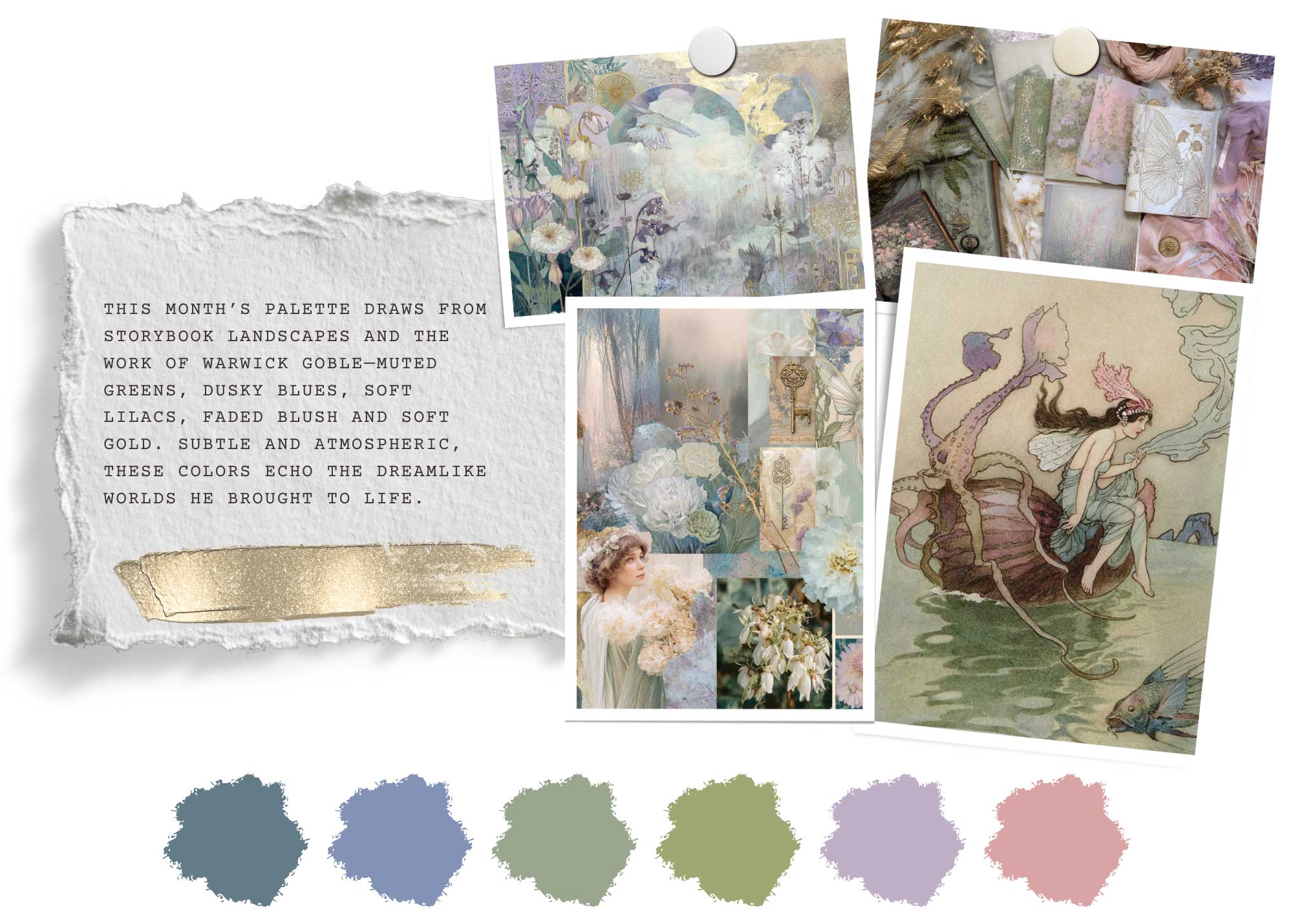
This month’s palette takes its cues from storybook landscapes and our Master Artist - Warwick Goble —muted greens, dusky blues, soft lilacs, pale golds, and the gentle warmth of faded blush. These aren’t bold or high-contrast colors. They’re subtle, slightly weathered, and atmospheric—much like the dreamlike worlds Goble illustrated in his fairy tale and folklore works.
Goble’s illustrations were full of movement and light, but his colors remained restrained—watercolor washes that suggested mood more than detail. He painted fairies, forest spirits, and mythical figures with a softness that felt both grounded and otherworldly.
As we explore themes of folklore, hidden realms, and the liminal space between spring and summer, this palette echoes that quiet, in-between magic. It invites us to slow down and notice the shifts—light changing through leaves, color lingering at the edges of dusk.
It’s a palette for reflective moments, gentle unfolding, and creative work that doesn’t push, but flows with the change of the season.
As we step into this month’s theme—where nature, imagination, and quiet magic intertwine—it feels fitting to turn our attention to the work of Warwick Goble, a lesser-known but deeply enchanting illustrator from the Golden Age of Illustration. His art lives right at the intersection of folklore, fairytales, and soft atmospheric beauty.
In a time when many artists leaned into bold narratives or stylized fantasy, Goble took a gentler approach. His fairies, spirits, and mythical figures seem to hover just at the edge of vision—never demanding attention, but quietly waiting to be noticed. That’s the energy we’re exploring this month. The in-between. The whispered. The felt-but-not-seen.
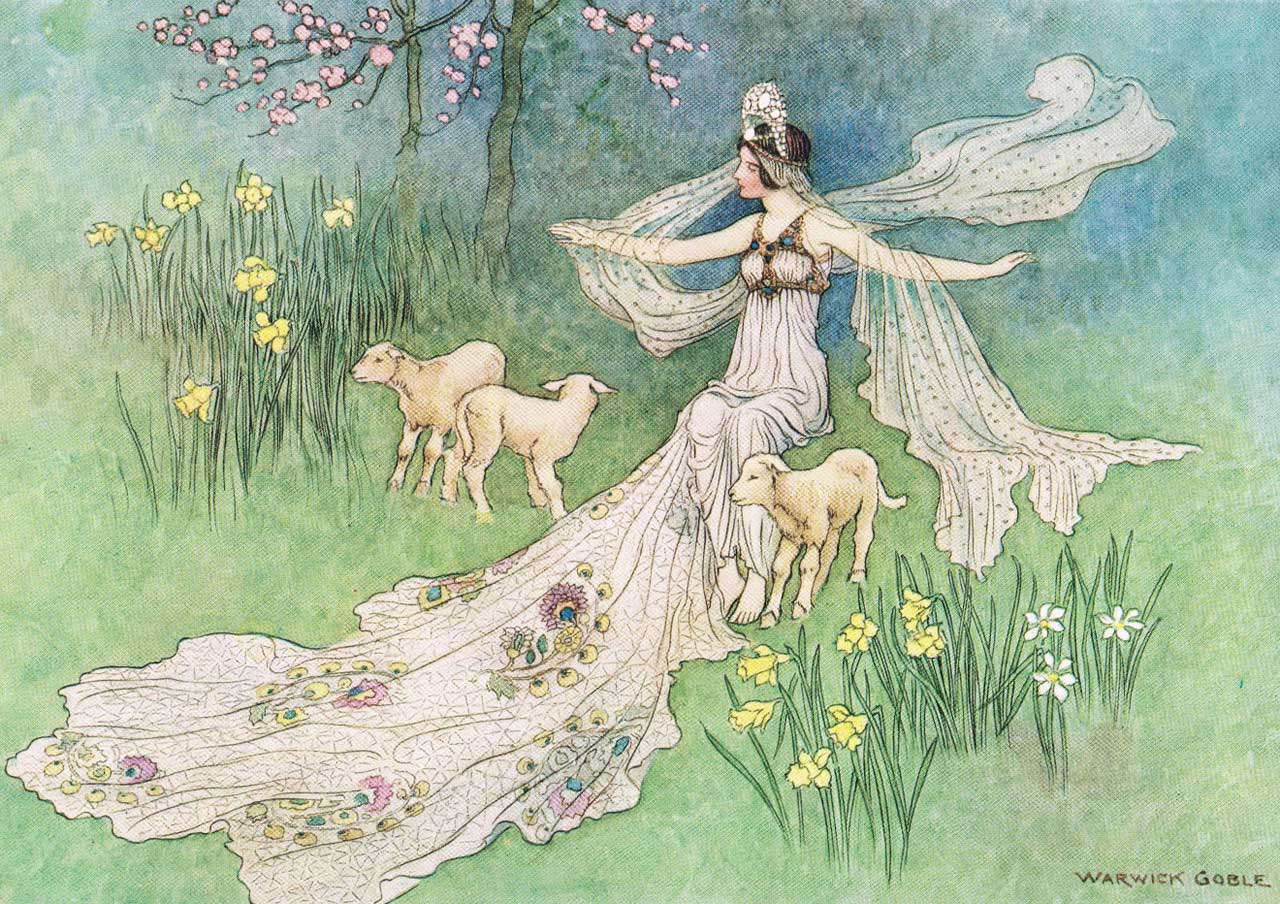
"These beasts of prey were instantly turned into three little lambs.' - from 'The Fairy Book'
By Warwick Goble, 1913
Warwick Goble was born in London in 1862 and studied painting and illustration at the City of London School and later at the Westminster School of Art. Like many illustrators of his era, his career blossomed during what is often called the Golden Age of Illustration—a period from roughly 1880 to the 1920s when advances in printing allowed for richly illustrated books to become widely available.
Goble began his professional career contributing illustrations to magazines like The Graphic and The Pall Mall Gazette, but he truly found his voice in the world of book illustration. In 1909, he was selected as the first illustrator of The Strand Magazine’s short story series, and shortly after, he became well known for his work with Macmillan Publishers.
What set him apart? Goble had a rare ability to render the mythical and magical in a soft, ethereal way. His use of delicate watercolor washes, airy compositions, and muted color palettes created a dreamlike quality that became his signature.
Warwick Goble illustrated over 20 books, many of them rich in folklore, mythology, and fantastical imagery. Some of his most well-known works include:
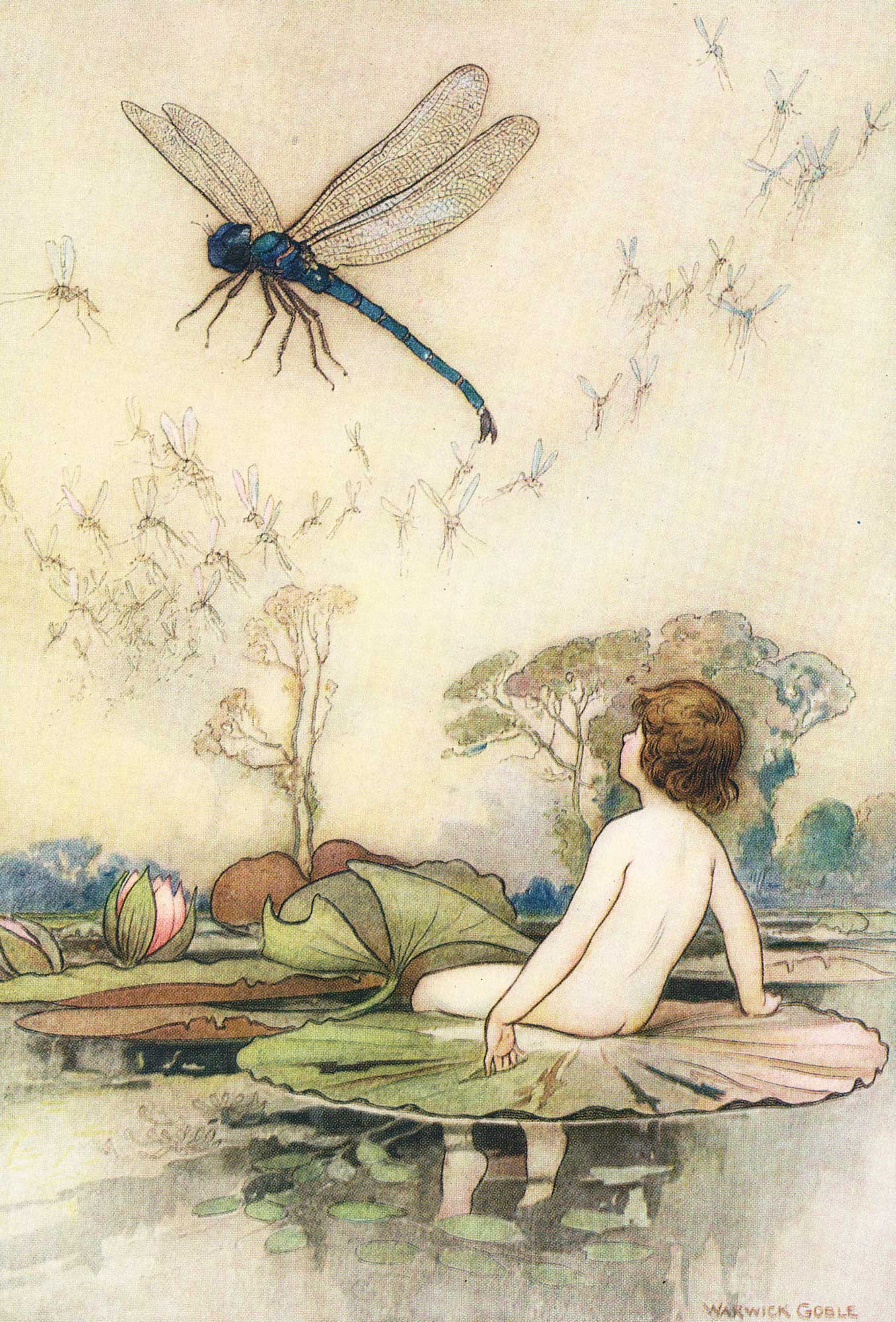
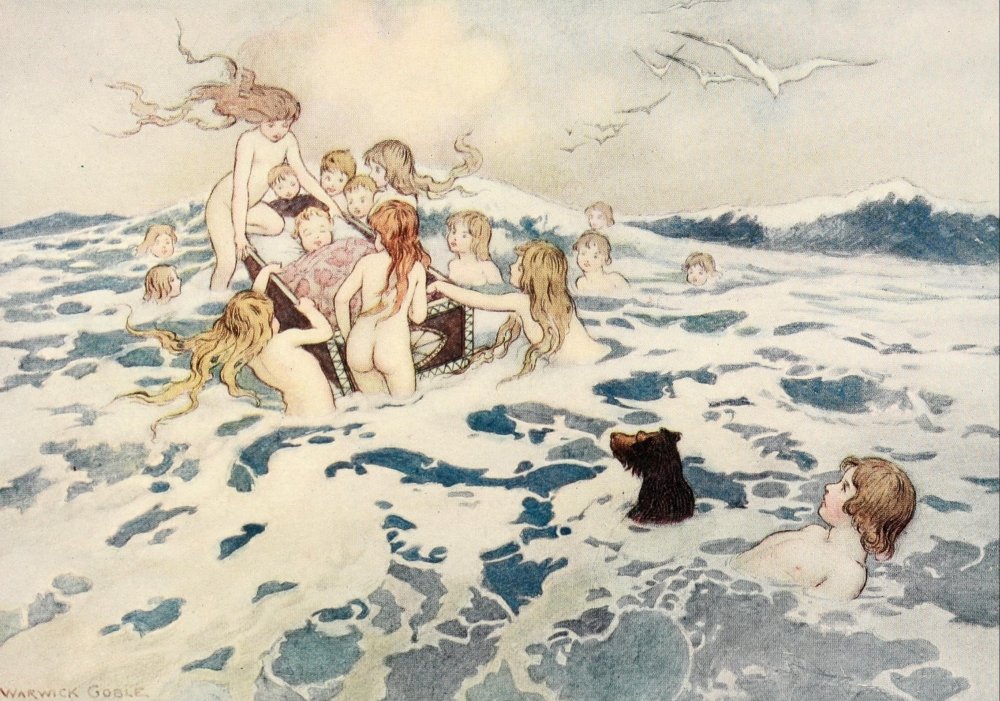
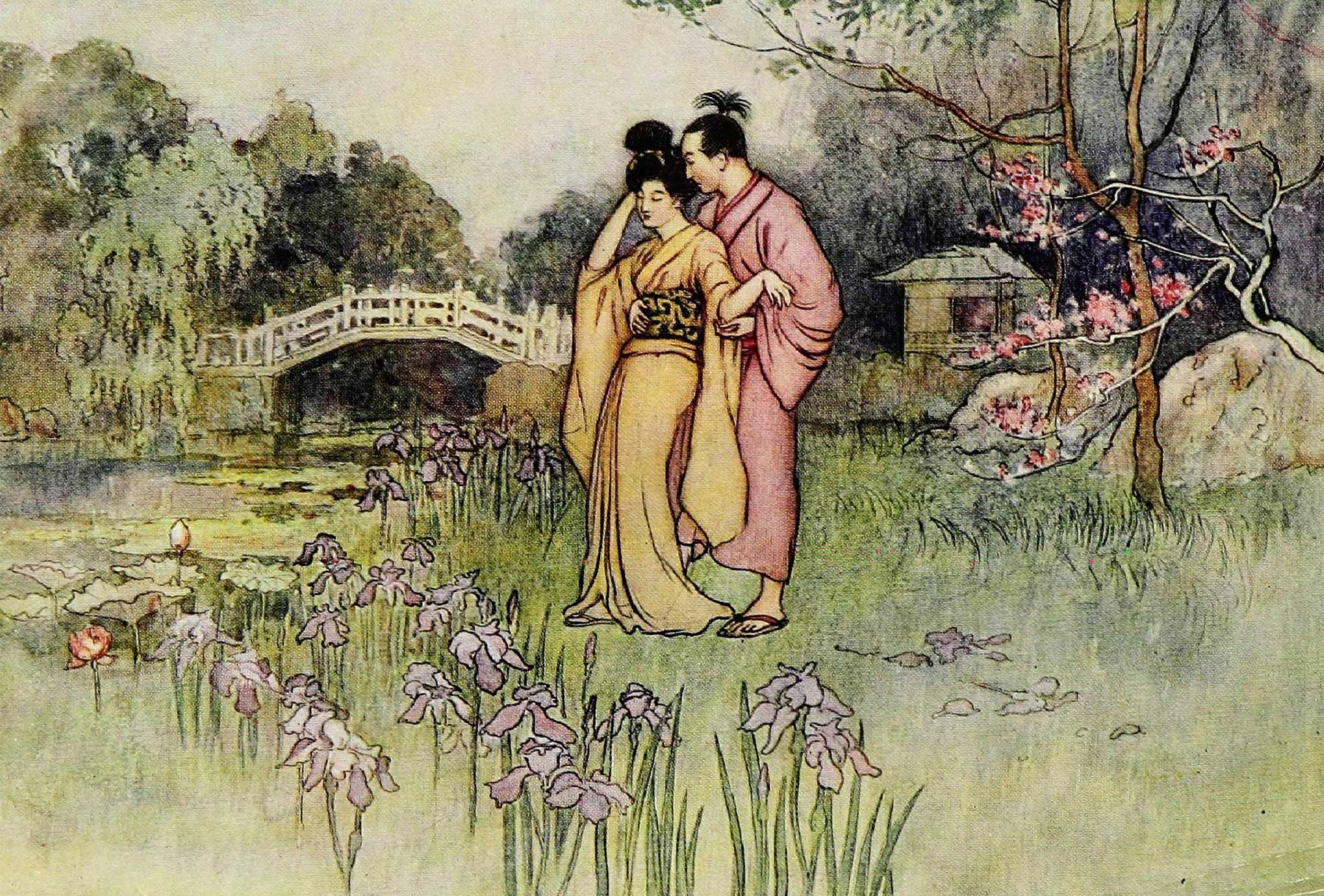
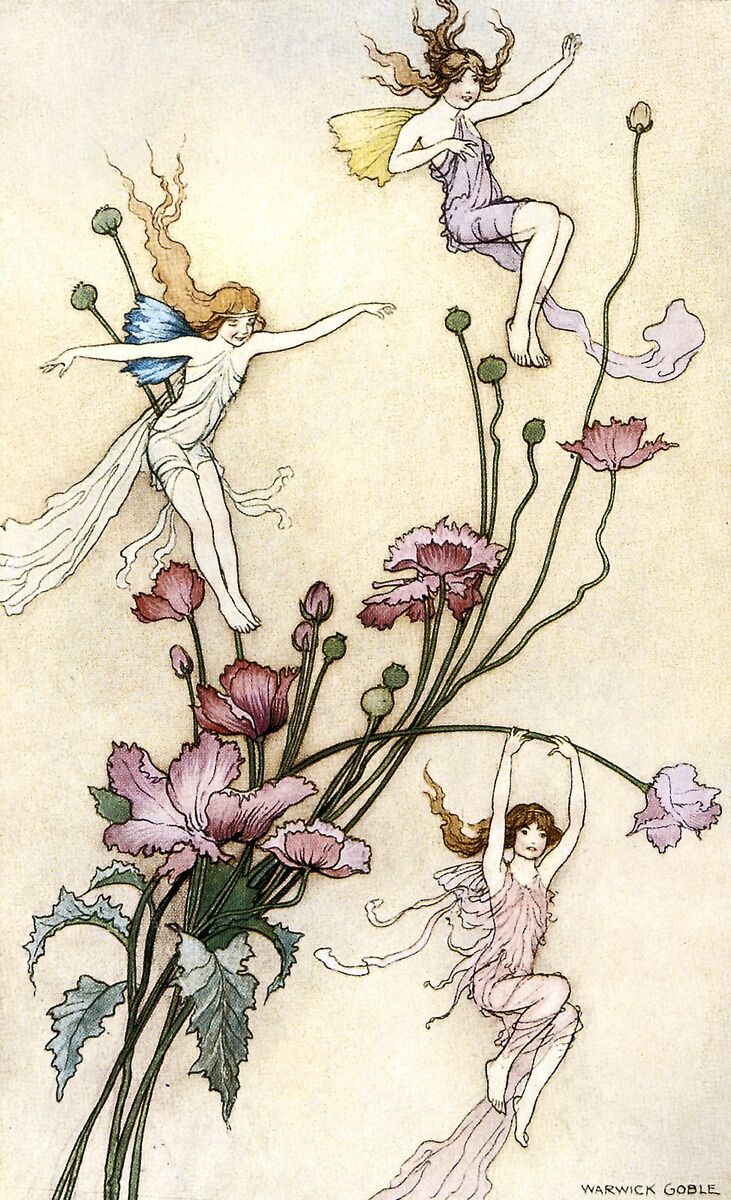
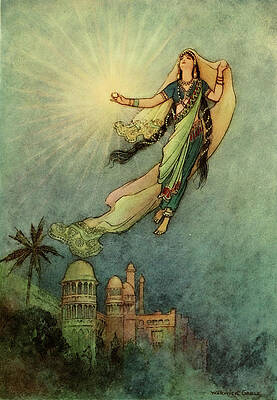
Though not always widely known today, Goble was deeply respected in his time for the elegance and restraint of his work. He didn’t overwhelm the page. Instead, he created space—space for imagination, for softness, for pause.
I hope you enjoy exploring his work and finding inspiration in the magic.
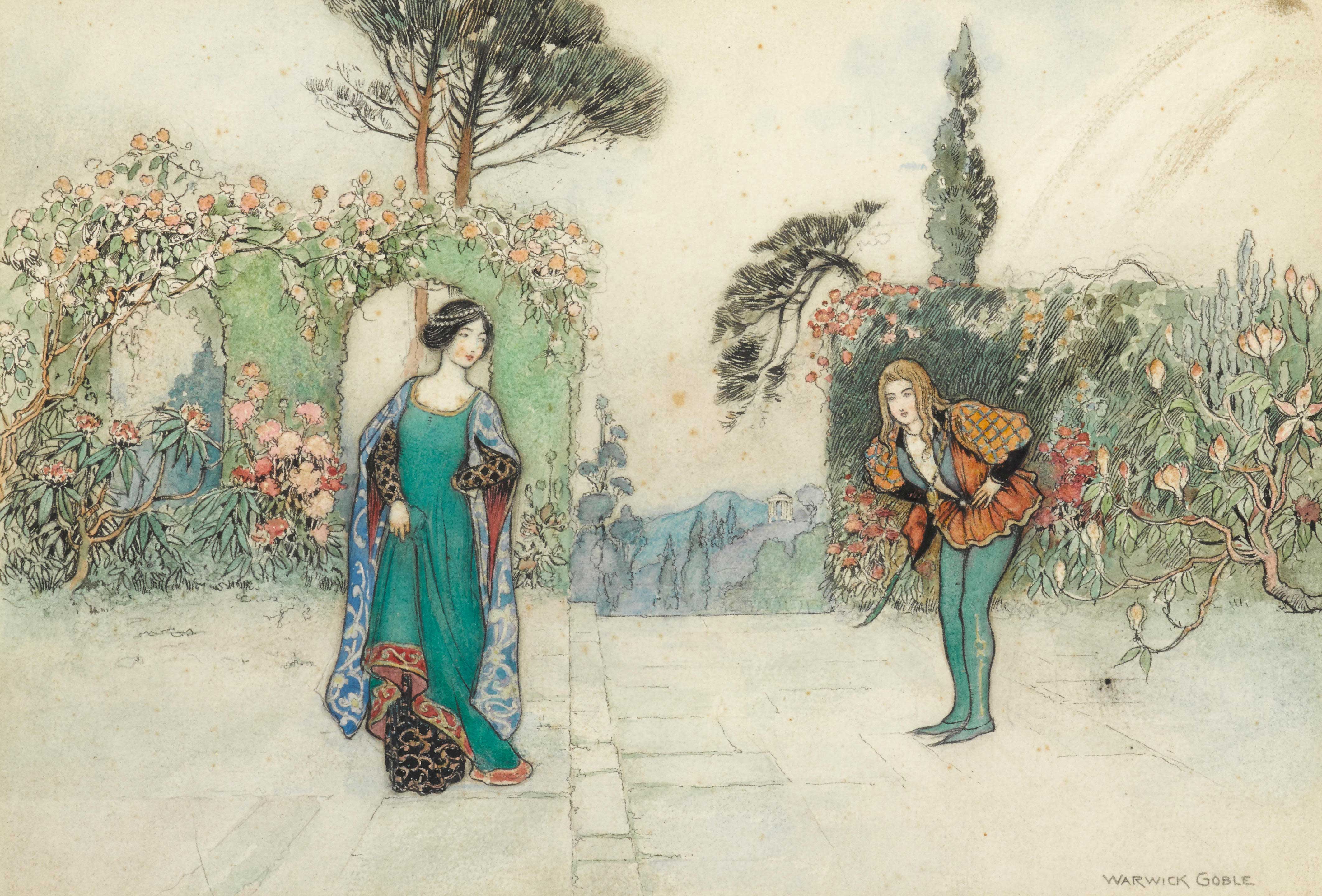
Warwick Goble’s approach to illustration was marked by restraint, subtlety, and technical refinement. Rather than rely on dramatic composition or ornate embellishment, Goble cultivated a visual language rooted in tonal harmony and atmospheric quietude. His use of watercolor—often characterized by soft gradients, delicate linework, and a muted palette—positioned him apart from many of his contemporaries during the Golden Age of Illustration.
Goble’s work often reads less as narrative illustration and more as mood study—his figures and settings appear suspended in time, offering not so much a linear story as a visual impression of myth, folklore, or poetic symbolism.
Goble worked primarily in watercolor, layering transparent washes to build atmosphere rather than detail. His paintings are soft, fluid, and subtly luminous. You’ll rarely find hard outlines or high contrast in his work—just gentle transitions, space to breathe, and a sense of calm woven through each scene.
Goble’s illustrations often leave room for quiet. Unlike many artists of his time, he didn’t overcrowd his compositions. His fairies and mythic figures float in airy, open space or blend into dreamy environments—creating a visual pause that feels both elegant and intentional.

While Goble didn’t write about his process, his work reflects influences from:

Choose one of Goble’s illustrations (see our Pinterest Board) create a study inspired by his use of color and technique. Work with a limited, muted palette—soft greens, lavender-grays, faded golds, or dusty blues—and try building up your image slowly with layered watercolor washes or translucent media like diluted gouache or inks.
Avoid heavy outlines or over-definition. Instead, aim to capture mood and atmosphere over detail. Let forms dissolve into the background. Allow space to remain untouched.
Go for a walk and collect one or two small natural objects that catch your eye—acorns, petals, feathers, stones. Arrange them into a tiny still life on your sketchbook page as if you were creating an offering or altar for a forest spirit.
Challenge yourself to:
Reflection:
How did it feel to treat small, ordinary things as sacred? What changed when you imagined your art as a gift for something unseen? Did it shift your relationship with materials or meaning?
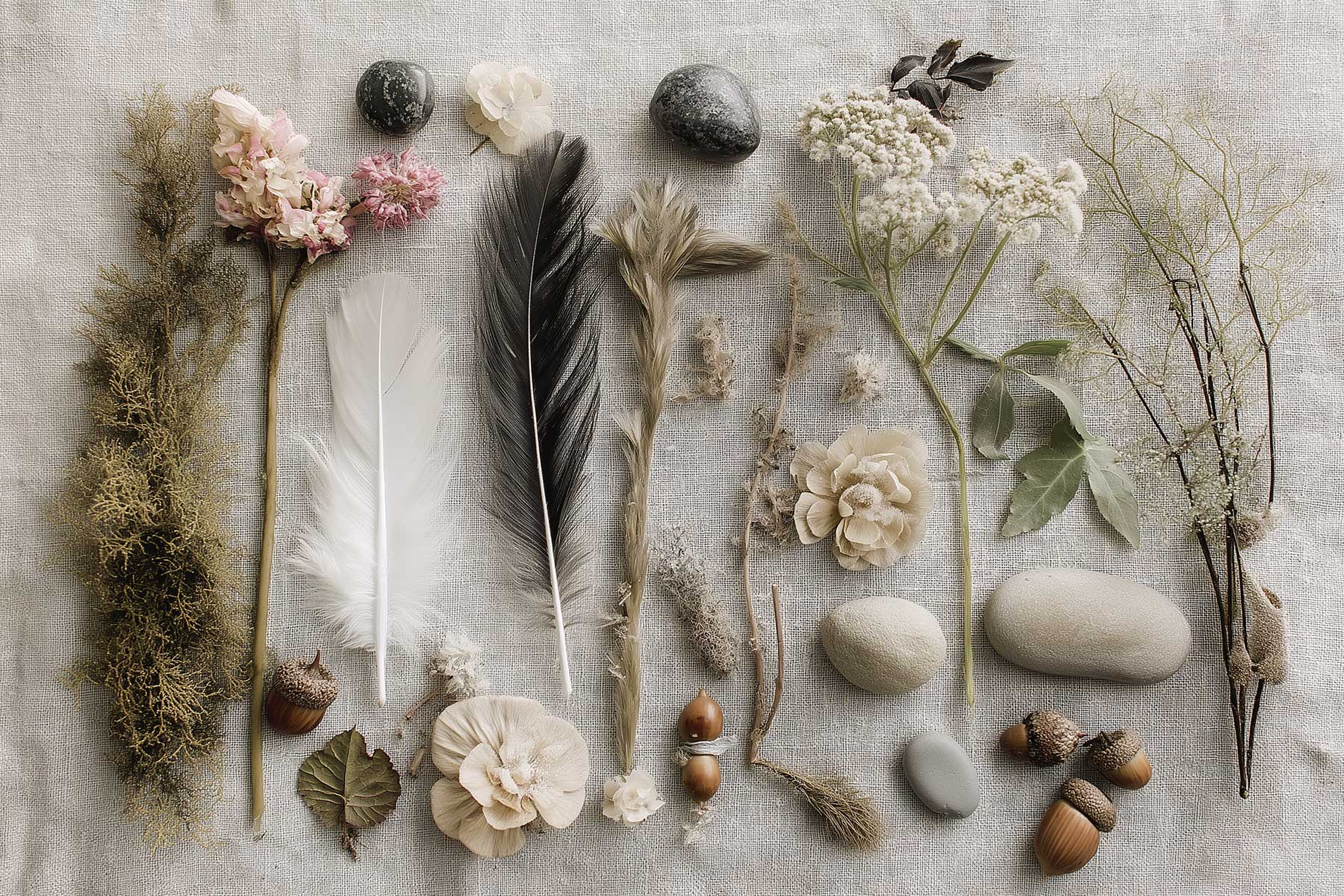
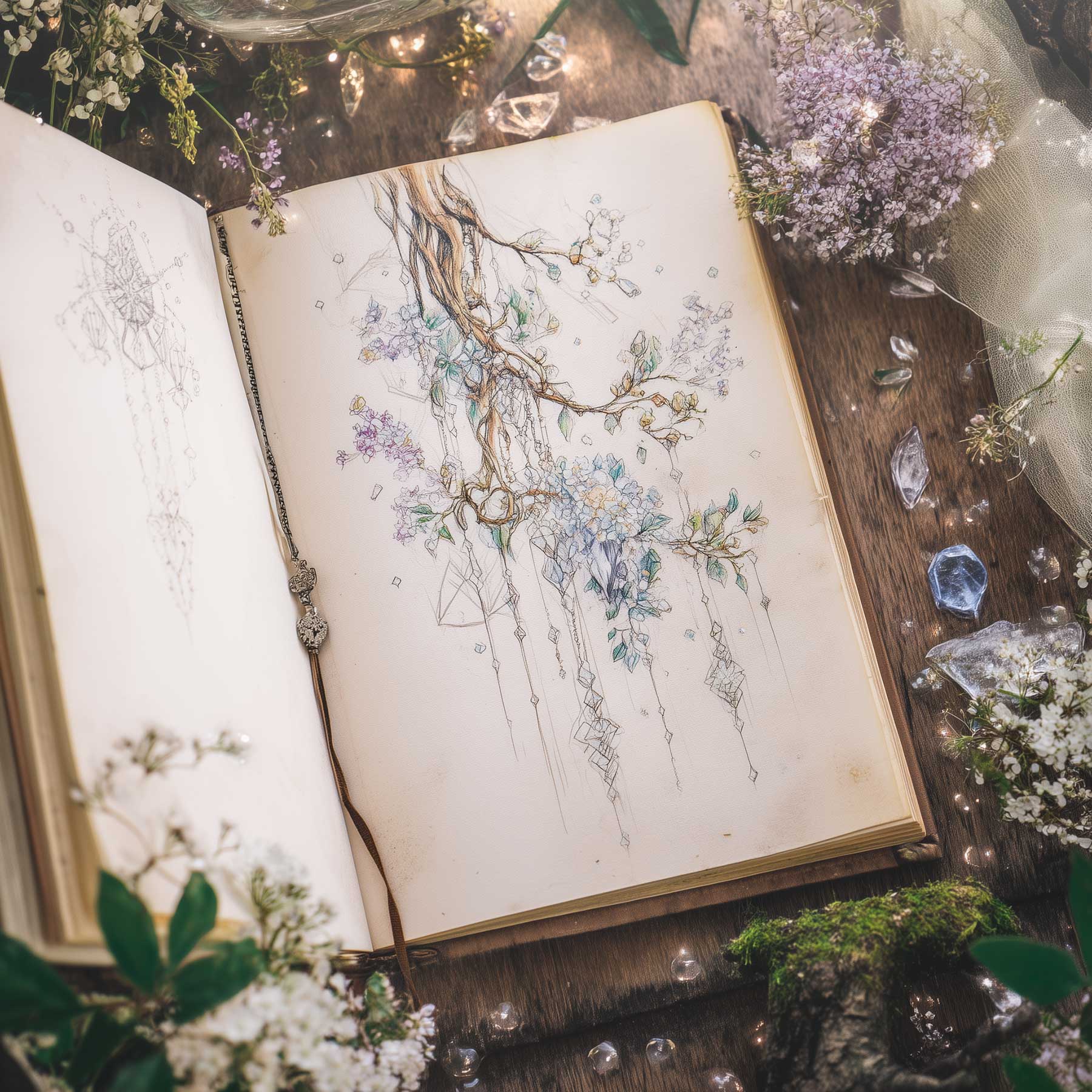
Begin with a real plant, flower, or tree as your reference—but instead of drawing it exactly, let it morph into something imagined: a plant with wings, a flower that glows, a tree that grows crystals or magical fruit.
Challenge yourself to:
Reflection:
What shifted in your perception when you gave yourself permission to invent? How does imagination interact with observation in your practice? Did this bring more playfulness to your page?
Imagine the fairy that lives within your creative world. She could be playful or wise, wild or quietly observant. Maybe she guards your sketchbooks, whispers new ideas at dusk, or tends the tiny garden where your inspiration grows. Now… give her form.
Challenge yourself to:
Reflection:
What qualities emerged in this portrait that surprised you? Did your fairy reflect parts of yourself you often overlook? How might she guide or protect your creative process moving forward?
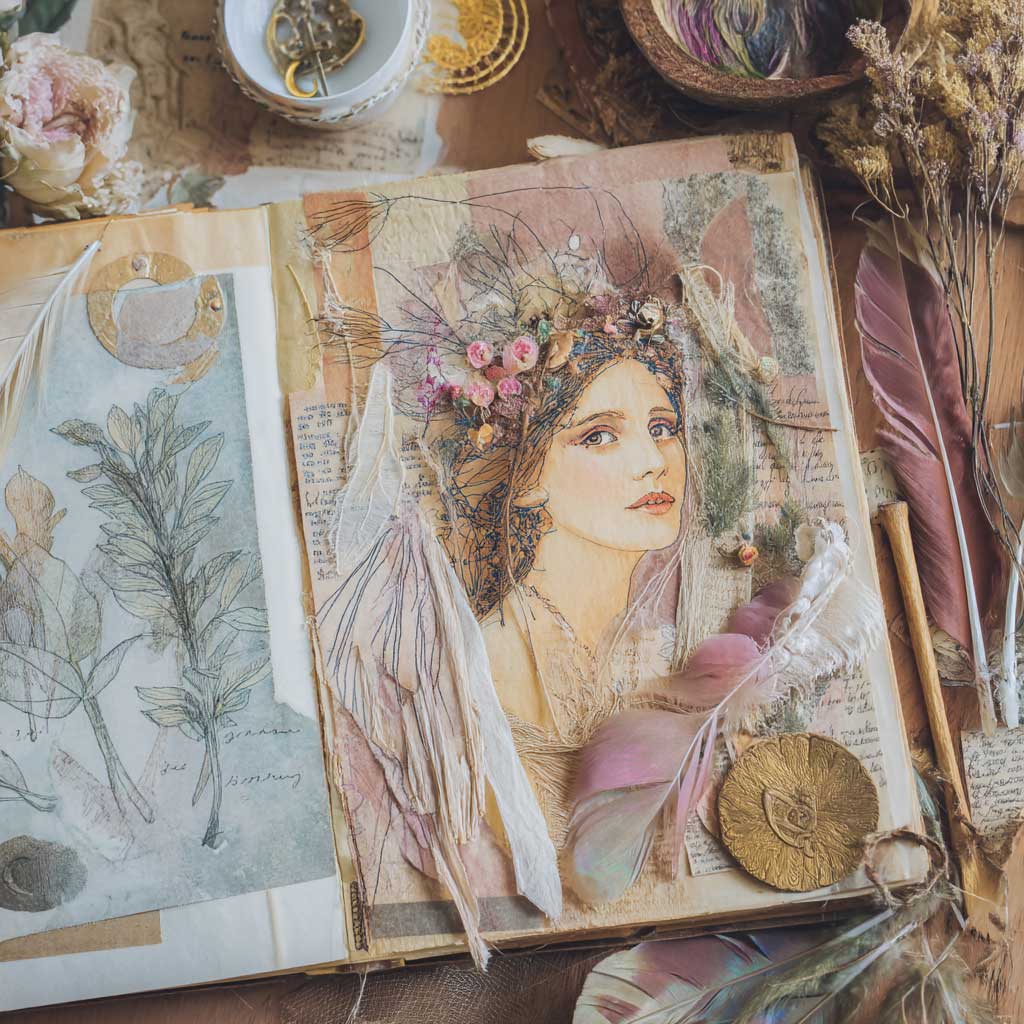
Into the Myst invites you to release fear and reconnect with the pure joy of creating. In this soulful class, Katrina Koltes encourages you to paint what truly matters to you—without expectation, judgment, or pressure.
Through gentle guidance and reflective prompts, you’ll explore how to express what you feel called to create, embracing freedom, intuition, and joy along the way.
You can also listen to this month’s issue of the Studioworks journal. I find I love listening to books, podcasts and music while I draw, paint or go on a long walk. Enjoy.
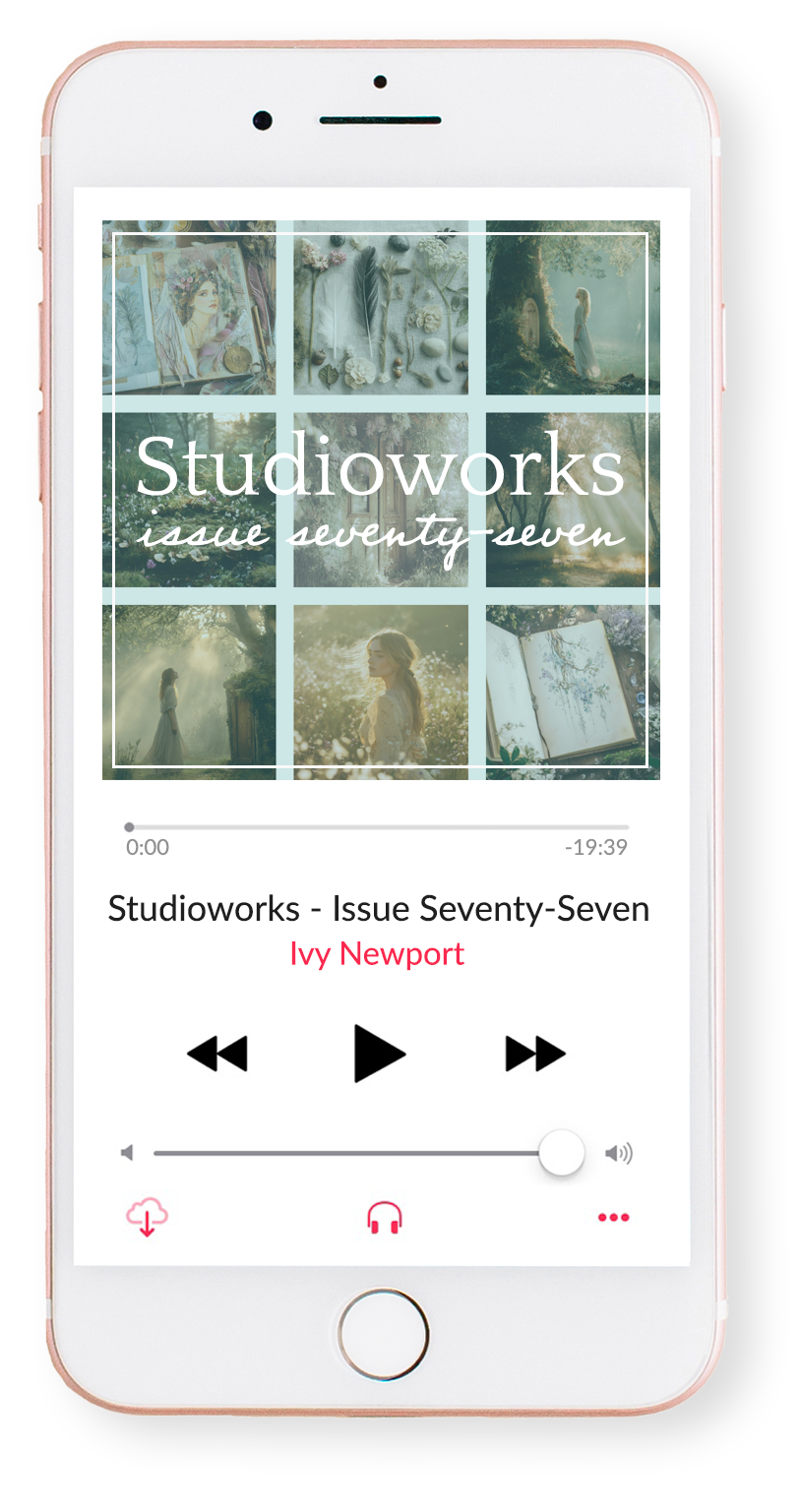
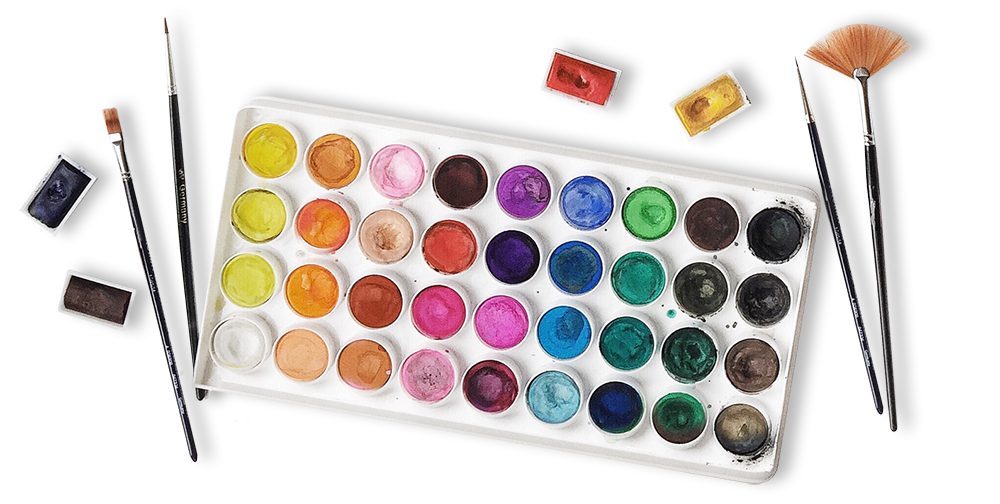
One of my favorite things to do is to curate inspiration. From Pinterest boards to books, resources, playlists and more - I love to share anything that might facilitate learning, expansion, and sparks of curiosity! Being an artist, we naturally crave these things so here are some of this month’s picks from me to you.
I had so much fun curating this list. I hope you enjoy!!
Here are just a few of our fantastic classes to go along with this month's Studioworks Creative Journal! I highly recommend checking them out if you haven’t already. Enjoy!